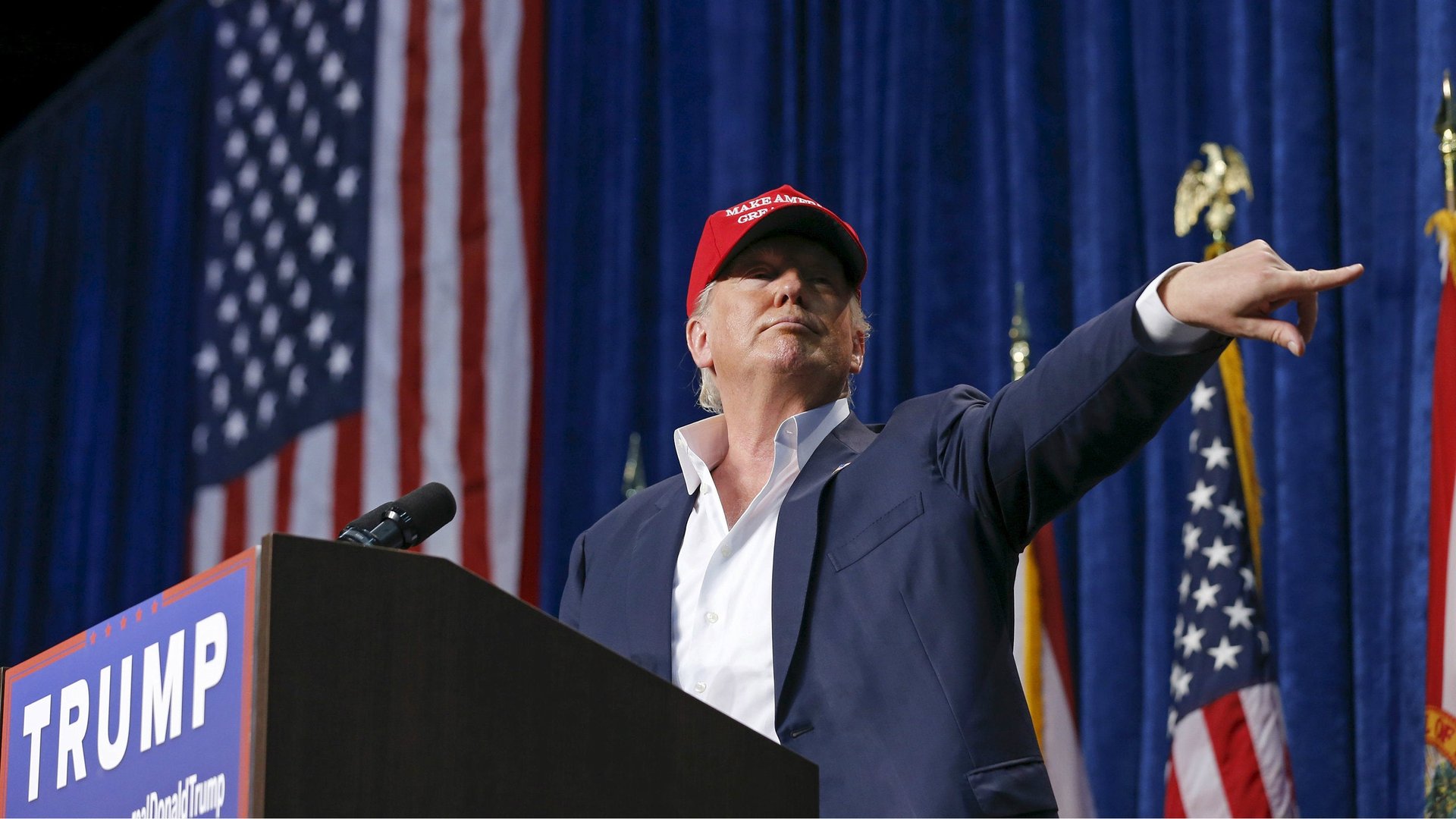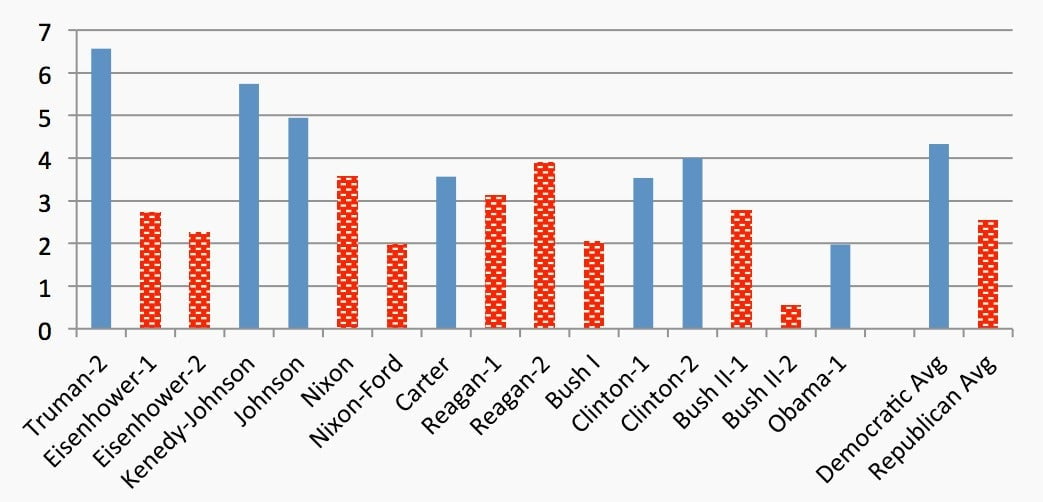Trump’s policies are based on economic growth typically only seen during wartime
Donald Trump won the presidential election by, famously, pledging to “make America great again.” A key measure of that greatness will be economic growth. In his victory speech, Trump said: “We have a great economic plan. We will double our growth and have the strongest economy anywhere in the world.”


Donald Trump won the presidential election by, famously, pledging to “make America great again.” A key measure of that greatness will be economic growth. In his victory speech, Trump said: “We have a great economic plan. We will double our growth and have the strongest economy anywhere in the world.”
Under Obama, average annual GDP growth in the US has been about 2%. If Trump managed to double this, his tenure would be the most economically successful (pdf) of any post-war Republican president. Ronald Reagan’s second term just about got there, but other Republican terms fell short, often by a lot. On average, Republican presidents with Republican-controlled Congresses produce 2.8% average annual growth, a bit lower than the 3.3% average for all president-Congress combinations since Truman’s second term.

And as for making the US economy the world’s “strongest,” if that means growth then the US economic has a long way to go—its GDP grew more slowly than 110 other countries last year, according to the IMF. If it’s just about absolute size, then the US has been the largest economy in the world for some time, currently at around $18 trillion.
Given its size, it’s not surprising that US growth lags many smaller, less developed economies. This year, the IMF estimates that the fastest-growing economies will be Iraq and Myanmar; next year, it’s Libya and Yemen. So let’s discard the “strongest” pledge and address the growth rate Trump claims can be achieved.
Trump continuously said during the campaign that he could boost annual GDP growth to 4%. When pressed for details during the final presidential debate, he said the “tremendous economic machine” that he would build would push growth even higher. “I think you can go higher, to 5% or 6%,” he said
In recent years, America has rarely sustained a rate that high. In the past century, the longest stretch of annual growth at or above 6% was during the Second World War. (Followed by a 10% drop, and many other horrors.)
The simplest way to boost economic growth is to expand the labor force. The unemployment rate is already below 5%, low by historical standards. The participation rate could be higher, but the clearest solution would be a rise in the overall population, which would require a burst of immigration. This goes squarely against Trump’s anti-immigration, “America first” stance.
If Trump economic growth pledge does not come to pass, it could also thwart his other plans. As Megan Greene, chief economist at Manulife, points out, Trump’s plans for government stimulus, including a big expansion in infrastructure spending, is based on the fiscal revenues produced by 5-6% economic growth. If that doesn’t happen, then many of his other core promises won’t either.